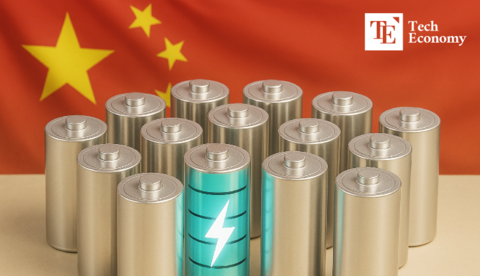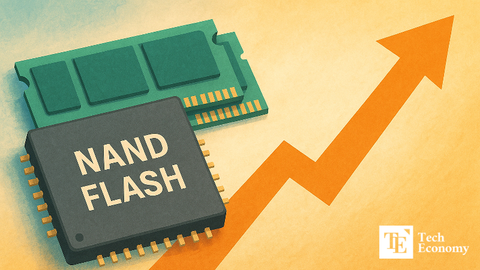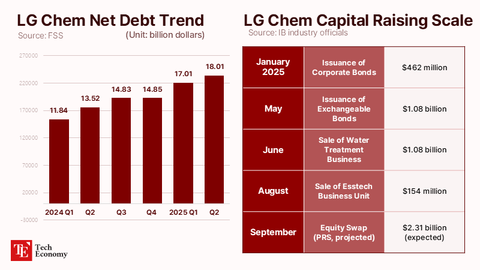Micron’s Bold Move: Chasing the HBM Crown in a Three-Way Race
Input
Modified
Heavy Equipment Orders Fuel a Capacity Surge From Underdog to Contender in HBM and DRAM A Global Production Footprint for Long-Term Growth

In the rapidly evolving high-bandwidth memory (HBM) market, Micron Technology is emerging as a formidable contender. Historically overshadowed by SK Hynix and Samsung Electronics, Micron is now charting a bold course—investing heavily in equipment, accelerating its production roadmap, and expanding globally. With the AI revolution driving explosive demand for high-performance memory, the stakes have never been higher, and Micron appears determined to claim a much larger share of this booming market.
Heavy Equipment Orders Fuel a Capacity Surge
At the core of Micron’s strategic push is a wave of bulk equipment orders. On April 14, industry insiders revealed that the company is procuring large quantities of TC bonders, the critical machinery required to stack DRAM layers for HBM production. The bulk of these orders have gone to Hanmi Semiconductor in South Korea and Shinkawa in Japan.
Hanmi, which already supplies SK Hynix, reportedly sold over 30 TC bonders to Micron in 2024. This year’s order volume has already surpassed that, signaling a major scale-up. Crucially, Hanmi’s equipment is the only one capable of manufacturing the in-demand 12-layer HBM3E, favored by leading customers like NVIDIA. In contrast, Shinkawa’s bonders are limited to 8-layer configurations, making Hanmi’s tools a strategic asset in Micron’s expansion.
This ramp-up aligns with the growing market appetite for HBM3E, especially as AI workloads push memory performance requirements higher. As Micron increases its dependence on Hanmi’s equipment, it's clear that the company is positioning itself not just for growth, but for leadership in next-generation memory technologies.

From Underdog to Contender in HBM and DRAM
Micron's ambition doesn’t stop at the current generation. The company is preparing for mass production of 16-layer HBM3E, a major step forward in memory performance and density. Industry sources say Micron is in the final stages of equipment evaluation and is investing heavily in the infrastructure needed to support high-volume manufacturing. SK Hynix is on a similar timeline, having unveiled its own 16-layer HBM3E plans last November. Meanwhile, Samsung Electronics has only pledged to complete development by the end of this year.
Micron’s technological leap is already translating into broader market gains. The company’s 12-layer HBM3E boasts 20% better power efficiency and 50% higher capacity than its 8-layer predecessor. It's also 30% more power-efficient than competitor offerings, according to industry assessments. These performance metrics are critical as AI accelerators like NVIDIA’s Grace Blackwell GB200 and GB300 become increasingly memory-hungry.
But perhaps the biggest surprise comes from the smartphone sector. Micron is expected to supply the majority of memory chips for Samsung’s Galaxy S25, launching April 22. This marks the first time Samsung has not led memory supply for its flagship smartphone. Analysts point to Micron’s LPDDR5X chips—offering superior speed and power efficiency—as the reason. It's a symbolic victory, showing that Micron is now a serious contender not just in AI and servers, but in consumer electronics as well.
Meanwhile, Micron’s overall DRAM market share continues to climb. According to TrendForce, the company’s share rose from 19.6% in Q2 2024 to 22.2% in Q3, while Samsung and SK Hynix both saw slight declines.
A Global Production Footprint for Long-Term Growth
To support its rising ambitions, Micron is laying the foundation for a global production network. Its primary HBM base in Taiwan is undergoing major expansion, targeting the fourth quarter of this year. In 2024, the company acquired two fabs from AUO, a Taiwanese display manufacturer, and it is investing heavily in new facilities.
By 2026, Micron plans to initiate HBM production at new plants in Singapore, Idaho, and Hiroshima. The following year, its state-of-the-art New York fab is expected to come online as well. These facilities will be crucial in meeting future demand, which the company anticipates will remain strong through 2026 and beyond.
During its Q2 FY2025 earnings call, Micron announced that all of its HBM output for the year had already sold out. It projected that by the fourth quarter, its HBM market share would reach parity with its DRAM share, which stood at 22.4% in Q4 2024. This is no small feat for a company that just a year ago held a single-digit position in the HBM segment.
Micron’s transformation is well underway. From a trailing competitor to a rising force, the company is capitalizing on performance, power efficiency, and strategic global investments to stake its claim in the next era of memory innovation. As AI reshapes the digital landscape, Micron is making it clear: it intends to lead, not follow.





















